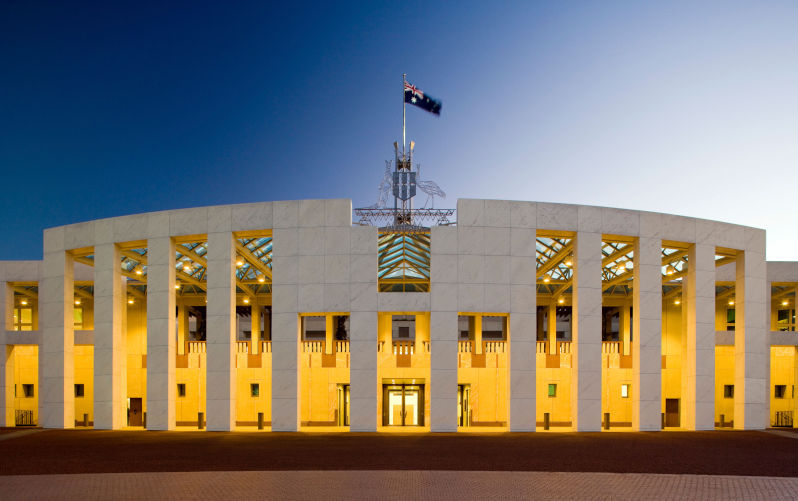There's nothing 'liberal' about the Liberal Party
July 18, 2025
It’s becoming increasingly untenable to describe the Liberal Party as “liberal” in either of the ways that term is used in modern politics. No wonder voters are confused about what the party stands for.
Two forms of liberalism now prevail – socio-cultural and economic. The Liberal Party that contested the last federal election is a champion of neither.
Socio-cultural liberalism is synonymous with progressivism. It’s a rights-based philosophy that prioritises social justice and freedom of choice in lifestyle and personal expression. It emphasises equality in matters of gender, race, and sexual orientation.
That doesn’t sound like the Liberal Party.
Just ask the voters.
In the 2017 same-sex marriage plebiscite, a yes vote of more than 65% was recorded in 47 of the country’s 150 electorates. Forty-one of those electorates still existed at the time of this year’s federal election. The Liberal Party won only four of them. Back in the 2016 election, it won 16.
A similar picture emerges from the 2024 Voice referendum. Twenty-seven electorates that voted yes in that referendum were around in both the 2016 and 2025 federal elections. In 2016, the Liberal Party won 10 of those seats. By 2025, it held only one of them. And that was the seat of Goldstein which the Liberals won by a razor-thin majority of just 175 votes.
Same-sex equality and Indigenous rights are fundamental positions for socio-cultural liberals. The collapse of the Liberal Party’s vote in the electorates most supportive of these positions reflects its perceived illiberalism.
In the same period that the nation’s most progressive electorates have abandoned the Liberal Party, there’s also been a decline in the party’s support across all electorates from women and young people. These are two of the most progressive constituencies.
Both trends demonstrate that, from a socio-cultural perspective, the Liberal Party is not seen as liberal.
Is it at least liberal on economic issues?
Economic liberalism is a philosophy that promotes a market economy, low tax, and small government. It seeks to minimise government intervention in the economy.
While the rhetoric of the Liberal Party still proclaims adherence to this philosophy, the reality of the party’s policy platform is very different.
At the last election, Peter Dutton opposed Labor’s policy to reduce the lowest income tax rate from 16% to 14% and threatened to break up the big supermarket and insurance companies.
His campaign spending pledges exceeded those of the Labor Government. The Parliamentary Budget Office’s 2025 Election Commitments Report reveals that the Coalition’s election commitments would have resulted in “$147.3 billion higher gross debt … reaching $1.7 trillion” over the next decade.
Increasing government spending, opposing income tax cuts, and interfering in the free market are markers of economic populism. not economic liberalism.
Dutton did campaign on cutting fuel excise and allowing tax deductibility for mortgage interest. But these were cynical attempts to buy votes rather than part of any ideologically coherent policy programme.
From an economic perspective, as from a socio-cultural perspective, the Liberal Party is clearly not liberal.
John Howard liked to refer to the Liberal Party as a broad church. His expectation was that it could be embraced by both conservatives and liberals. Through a combination of personal popularity and political cunning, he was able to sustain that ideological alliance.
Lesser mortals like Tony Abbott and Dutton have been unable to do so and the Liberal Party’s broad church has become an increasingly implausible edifice. The liberal arm of the congregation has left the building, leaving a party that is culturally conservative and economically populist.
Given that Labor is also economically populist, there’s nothing to distinguish between the two major parties except their socio-cultural positions. And in an increasingly progressive Australia, that’s a recipe for electoral disaster for the Liberal Party.
No doubt many Australians are culturally conservative. But a significant proportion are either traditional “country conservatives” in rural and regional seats firmly held by the Nationals or migrant “religious conservatives” in outer suburban seats firmly held by Labor.
Socio-cultural conservatism is a liability in many of the seats that the Liberal Party has lost in the last two elections, seats it must win back if it wants to return to government. Crucially, that conservatism works against the Liberal Party under Australia’s preferential voting system. Too many voters simply refuse to preference a culturally conservative party.
Can Sussan Ley turn the Liberal Party ship around? Not easily. She inherits a legacy tainted, rightly or wrongly, by perceptions of sexism, fiscal populism, climate change denialism, even racism. Not to mention intra-party conflict.
It will take more than a female leader and a few gender quotas on party representation to dislodge such deep-seated views and to win back urban and inner-city liberal voters. It will require genuine reform on issues such as gender equality and climate change plus a comprehensive and fiscally responsible policy program to stimulate productivity and foster economic growth.
Can Ley do all that while managing the schism between moderates and conservatives inside her party? The narrow vote that brought her the leadership suggests it won’t be easy.
But there’s no choice. An illiberal Liberal Party has no future.
The views expressed in this article may or may not reflect those of Pearls and Irritations.

